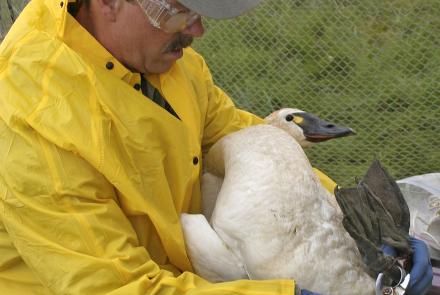Albino Plants
Every once in a while the careful observer will run across an albino plant. Albino seedlings of Alaskan white spruce, aspen, birch and balsam poplar have been found, as have albino root suckers from aspen and fireweed plants. Other species of northern plants perhaps also exhibit occasional albinism.
Albino seedlings probably result from the combination in the seed of genes that were recessive in the parent plants. The albino root suckers are thought to develop from mutation in a single cell or in a group of cells, because the rest of the plant from which the albino stem grows can be normal.
As in animals, albinism in plants is caused by lack of pigment. However, in plants the lack is fatal because the missing pigment is chlorophyll. Without chlorophyll, the albino plant has no way to manufacture the food needed for survival and growth to maturity. Albino seedlings usually live only about a week, but albino root suckers tend toward a bit more longevity because they can draw food from the parent plant.
Even though albino plants do not live long, their occurrence is useful to those who study forest genetics. The genes that create albinism can be used as markers to examine the rates and patterns of seed dispersal from those trees which carry those particular genes.
To find albino plants, look for those with white or pinkish leaves and stems. If the albino plant is growing from the stem of a normal plant, there may be transitional features at the juncture. For example, I recently found a fireweed root from which normal shoots were growing up to one point on the root. At that point grew a stem showing mixed albino and normal characteristics, beyond it twelve totally albino shoots grew.
Not all mutations or unusual gene combinations are harmful. In fact, by watching for favorable abnormalities it has been possible to develop important new varieties of fruit, flowers and ornamental plants Not all plant abnormalities are due to mutations or unusual gene combinations since external causes can create abnormal appearances. Examples are the cancer-like burls that grow on northern spruce and birch trees and the witch's broom that certain fungi cause in spruce.



